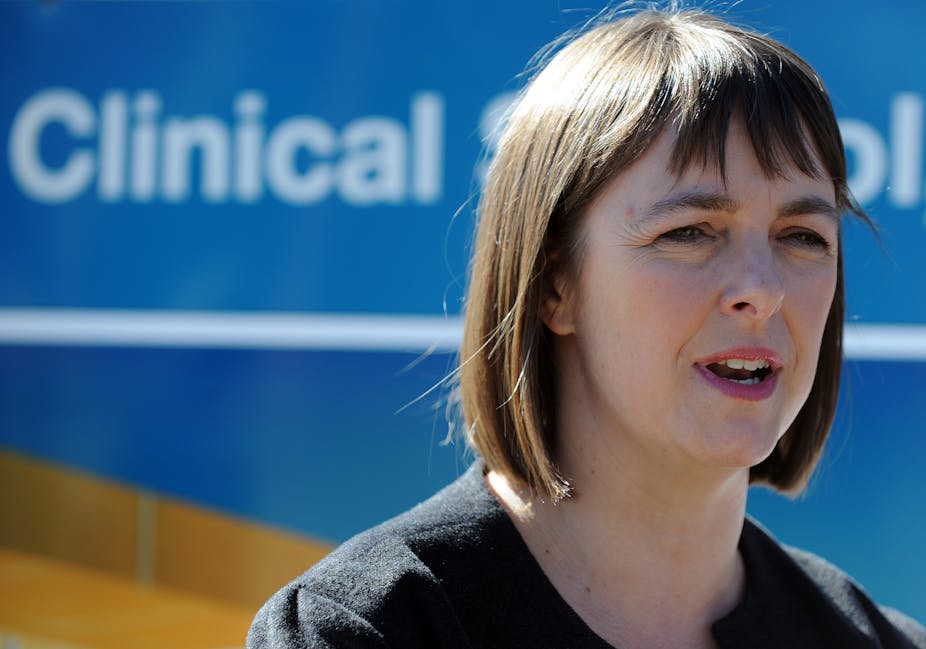In the latest change to the Federal Government’s health reforms, Health Minister Nicola Roxon has scrapped the guarantee that public patients who don’t receive their elective surgery on time will be treated in private hospitals. Stephen Leeder, Director of the Menzies Centre for Health Policy answers these questions about the health reform process.
How different is Australia’s health reform plan today compared with the original agreement and Labor’s 2007 threat to take over hospitals?
The states have reclaimed a lot of the authority and power that would have been surrendered in the original reforms.
For example, the degree to which the Commonwealth planned to fund public hospitals has reduced and hospitals remain a major financial responsibility of the states.
The structure of the waiting lists and performance indicators reflect more input from the states than was originally envisaged by the Commonwealth and, quite likely, the process of determining the “efficient” costs of service provision will bear the influence of the states more than was originally planned.
So there is a move away from a lot of the original thinking, which was for the Commonwealth to take a much more active role in funding and managing public hospitals, back to a situation where the states are primarily responsible for the provision of services.
That’s quite a substantial political shift and quite a substantial financial shift.
The government initially touted these reforms as being the biggest since the introduction of Medicare, does this ring true? Will we see much difference to the status quo?
It was a brave statement to suggest that these changes were of a magnitude that bore comparison with the introduction of Medicare. We’re all entitled to first impressions and the occasional burst of hyperbole but frankly, they never were.
Reform is what you actually do when the structures change. And most of the reform agenda was for a change in structure – the construction of local hospital networks, the introduction of hospital boards, a greater degree of clinician involvement, more community accountability and a better functioning relationship between general practitioners and primary healthcare people through the establishment of Medicare Locals.
They were all structural shifts and the reform occurs when we see better working relations between the community and hospitals.
What Mr Rudd and others had in mind was a move towards a situation where clinicians, hospital managers and general practitioners and others would find it easier to do two things.
1) Manage the steadily growing number of people with chronic problems (such as diabetes, heart disease, asthma) that demand our care.
2) Find a way of using the health dollar more efficiently than we’ve done, because health care costs are rising at 8% a year, which is unsustainable.
In the health reform process the government’s public message has focussed on waiting times, targets, measurements and delivery – has this part of the reform been given too much emphasis?
Not really. Public perception needs to be managed. For most people, gaining access to the health system when you need it – in an emergency or for an elective surgery procedure – are markers of whether the system is satisfactory.
But what goes on behind the scenes is altogether another matter. Health professionals on the inside want more input into the direction that health care reform takes and that is happening.
Once the Medicare Locals are up and running, I’m confident we’ll get a structure established whereby we can provide better care for people with chronic health problems. But these are all internal things – they’re not what the public sees.
So the general public rightly judges the success of the system on waiting lists, time spent in emergency department and quality of care. Most of the evidence shows that we do pretty well on the quality marker. We can always to better, but the quality is generally quite high.
Given what’s currently on the table for the health reforms, are we likely to see improved access, reduced waiting times and better care?
Yes, we will see genuine reforms.
But we can be more efficient, especially if we link hospitals and community care more closely – the local health networks with Medicare locals (primary care organisations). That will take time – probably two to three years – that’s a reasonable structure.
It’s now up to us inside the system – the health professionals – to make the reforms work.
There is one big thing that I would like to see in the reform process: move progressively to just having one public funder, not nine (the Commonwealth, six states and two territories).
This was in the original health reform plan – is this one of the failures of it being watered down?
Mr Rudd’s suggestion was for a 60/40 funding split, where the Commonwealth took on slightly more of the funding responsibilities. We’ve moved back from that, which isn’t good. I’d like to see it move the other way, with the Commonwealth contributing more funds to hospitals.
It’s only when one agency pays the whole lot that you’ll see real efficiencies in linking hospital and community care. That’s the only way to do it.
We also need to expedite information technology that provides the base plate for that kind of linkage. We’ve got to get the point where we have such good information systems that we can track a patient from their general practice, to the local physio, to the pharmacy, to the hospital – wherever they go to receice care – so we’re not needlessly duplicating tests, we’re not making mistakes about the drugs that are prescribed.
We need an information technology system where everyone knows what’s going on with that patient.
If we had reform that led to the Commonwealth really funding the whole health system and a really sophisticated information technology system, then we’d have a couple of reforms that might just begin to measure up against Medicare. But the ones we’re talking about at the moment certainly aren’t of that calibre.

